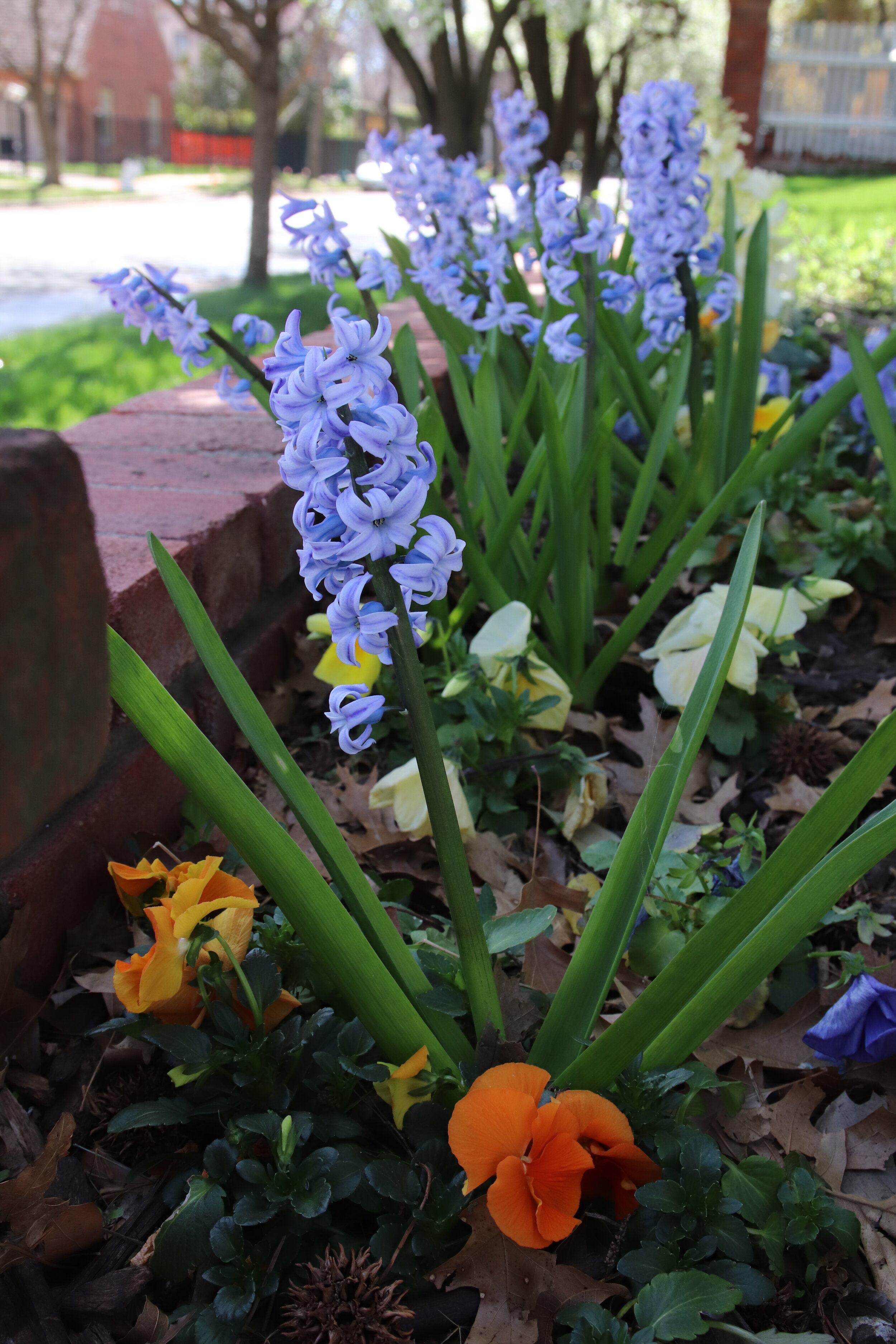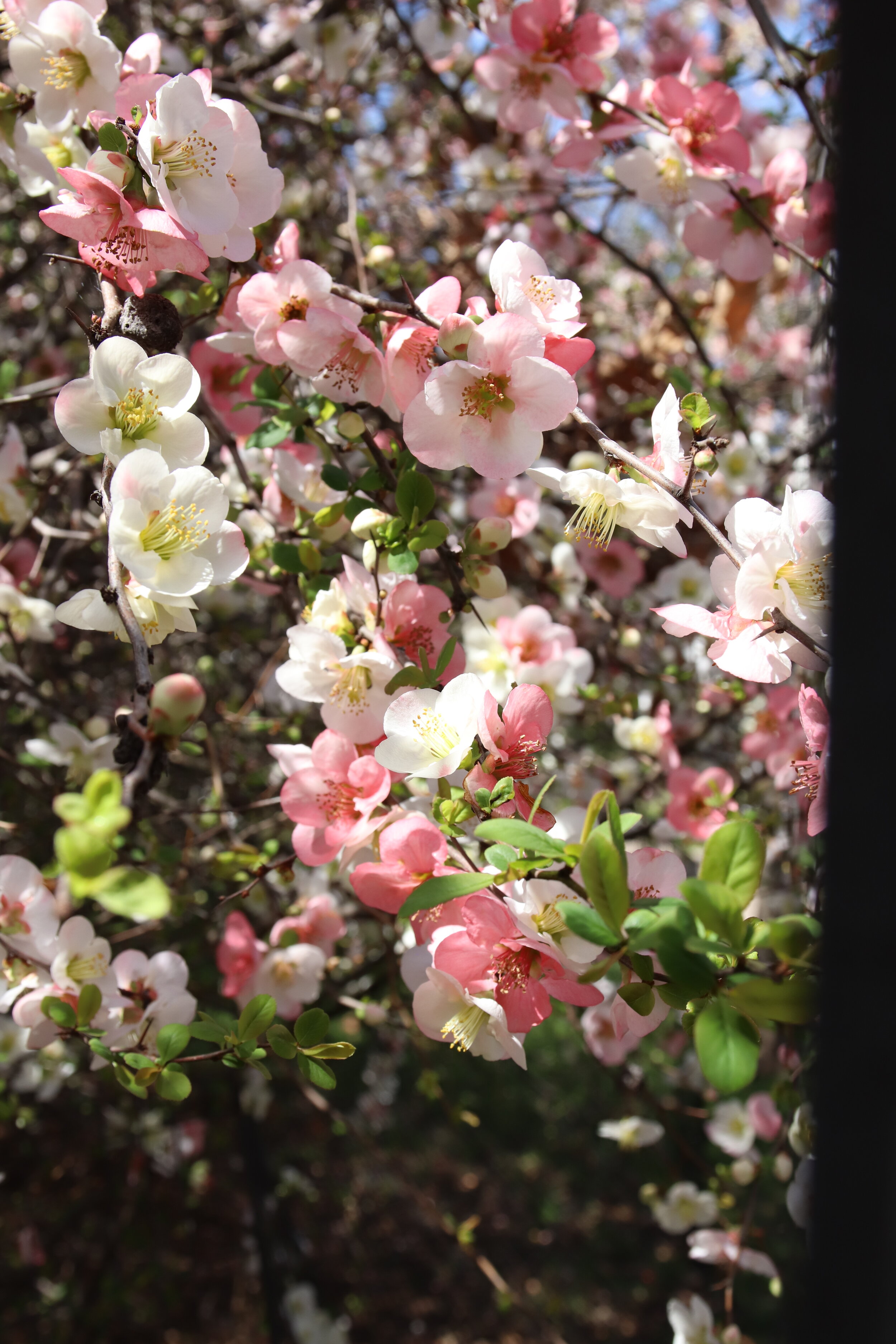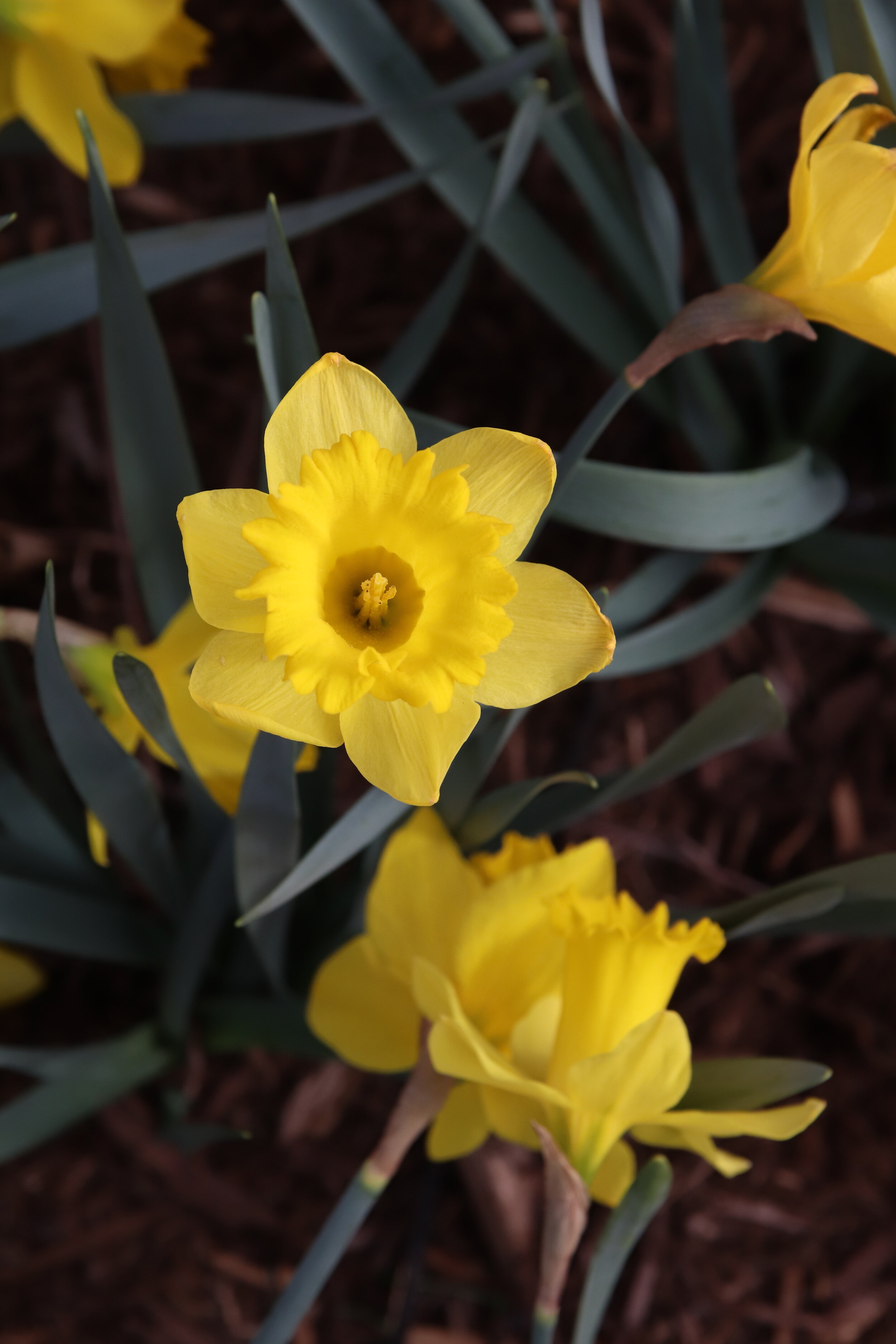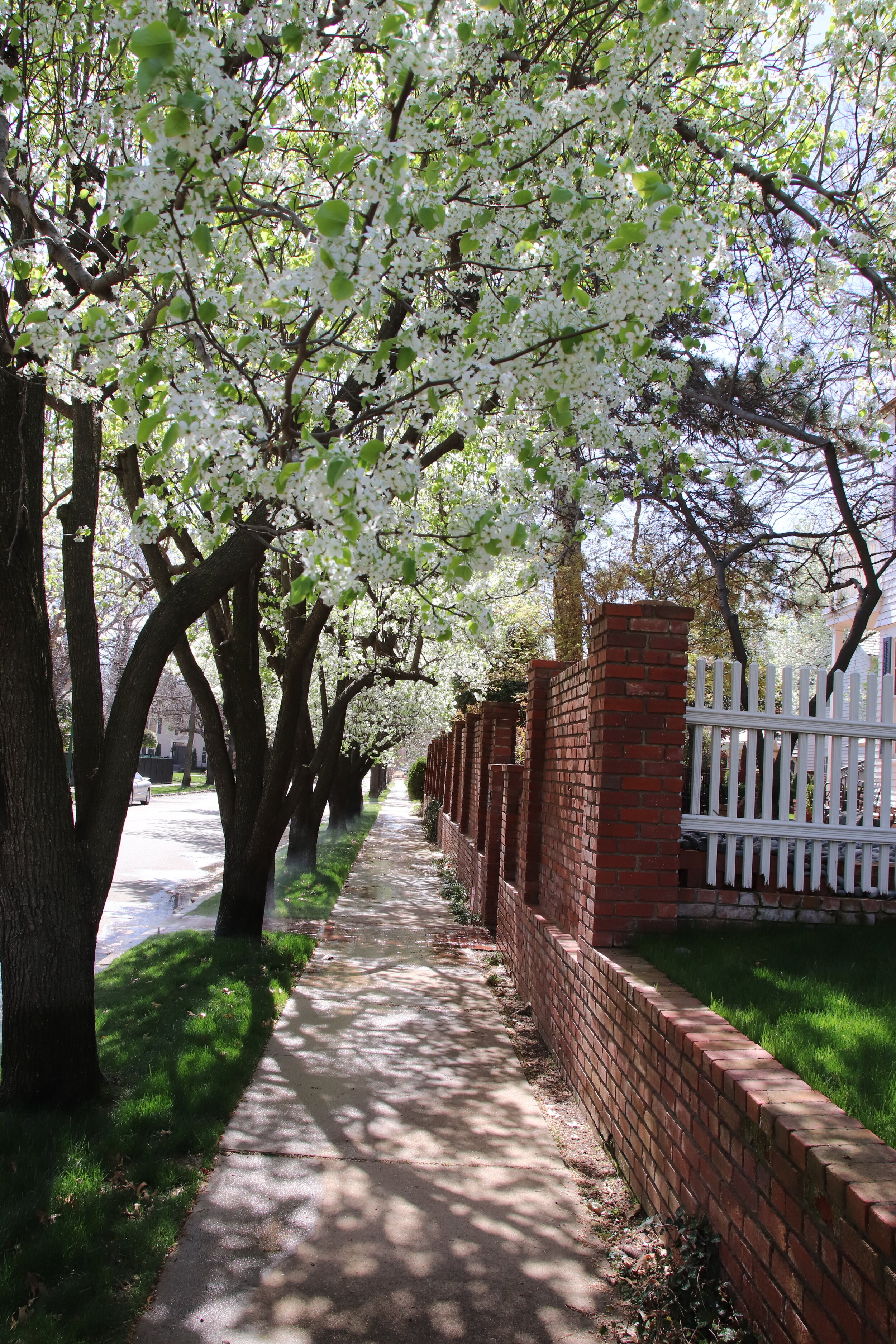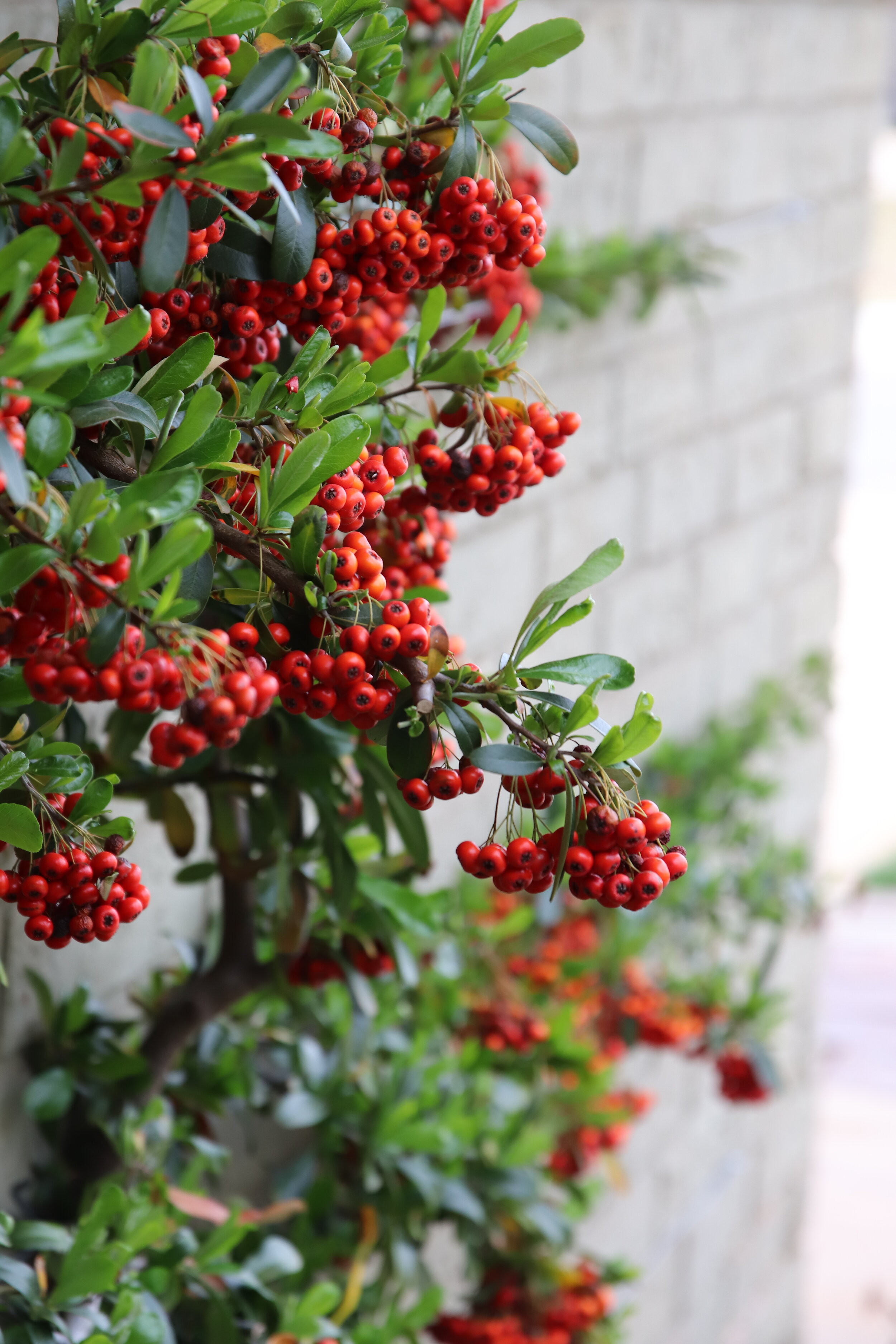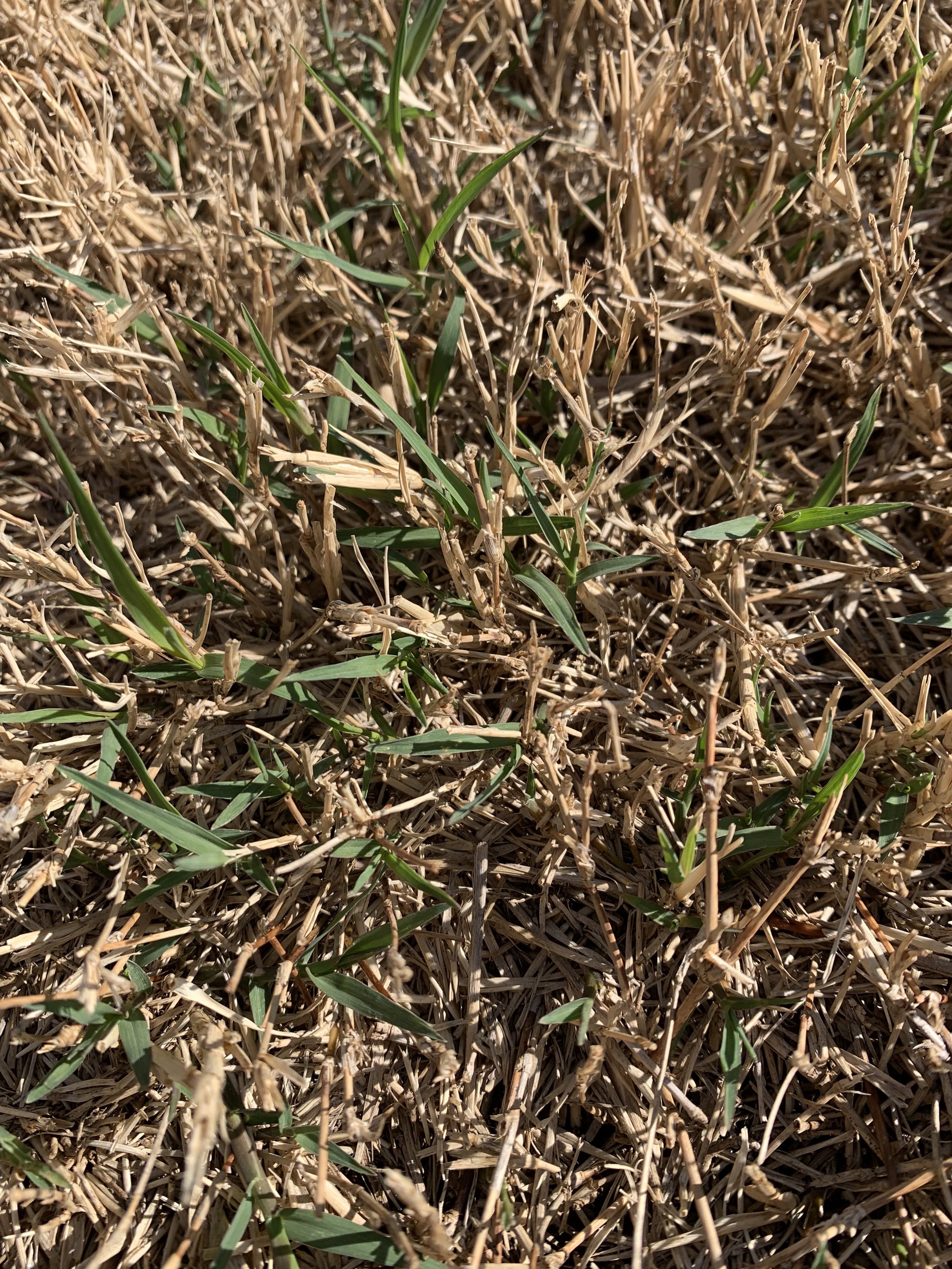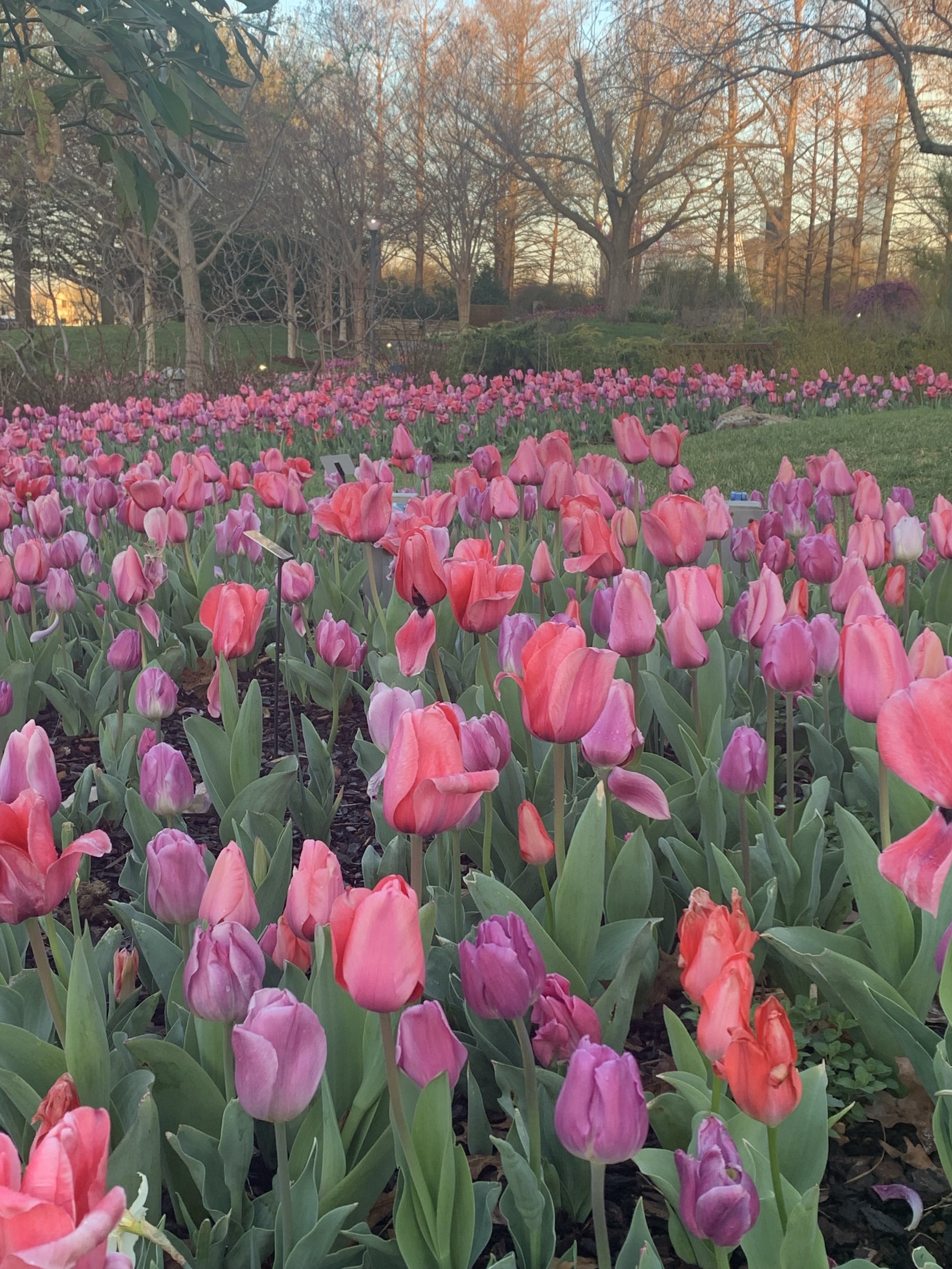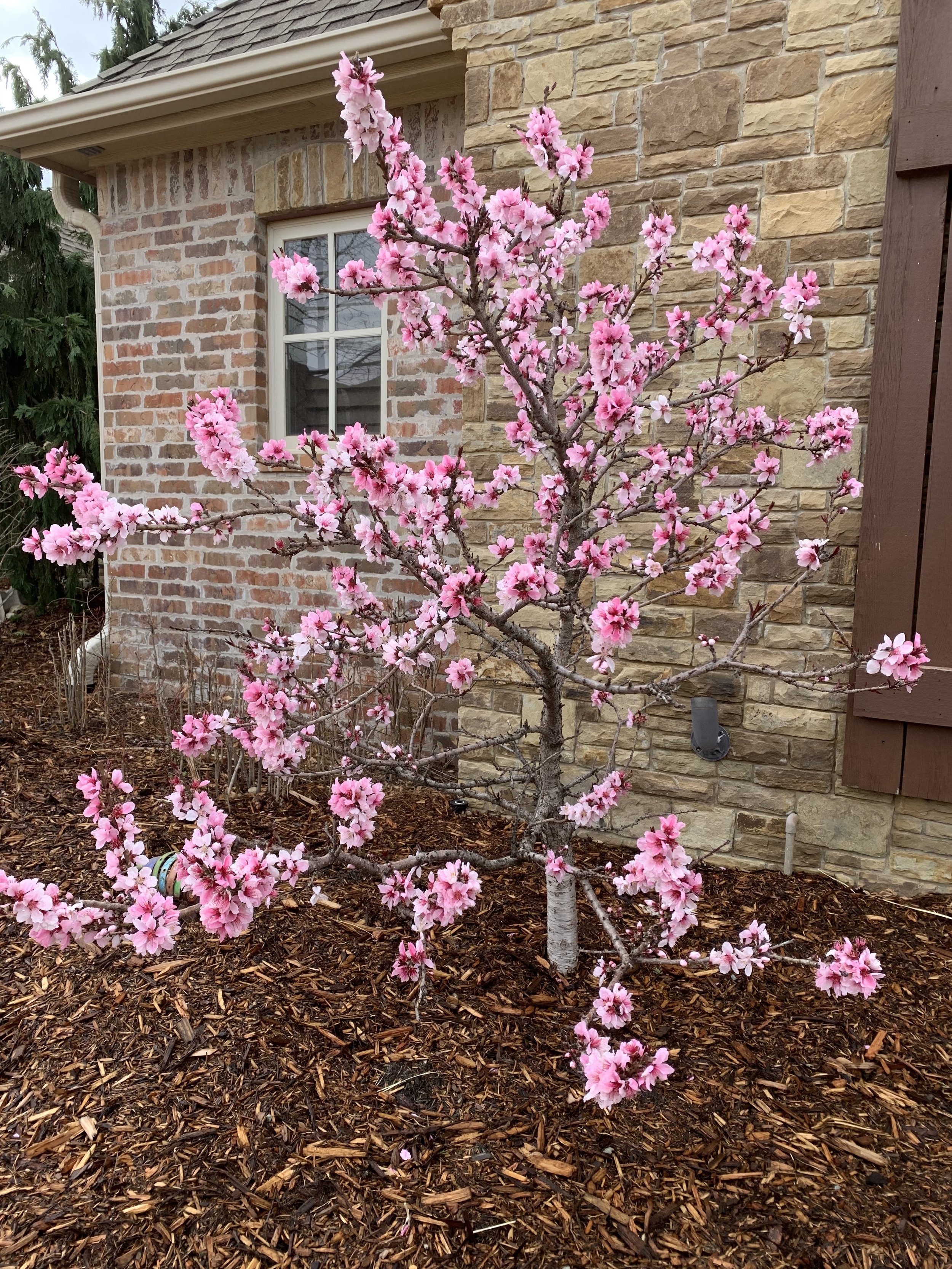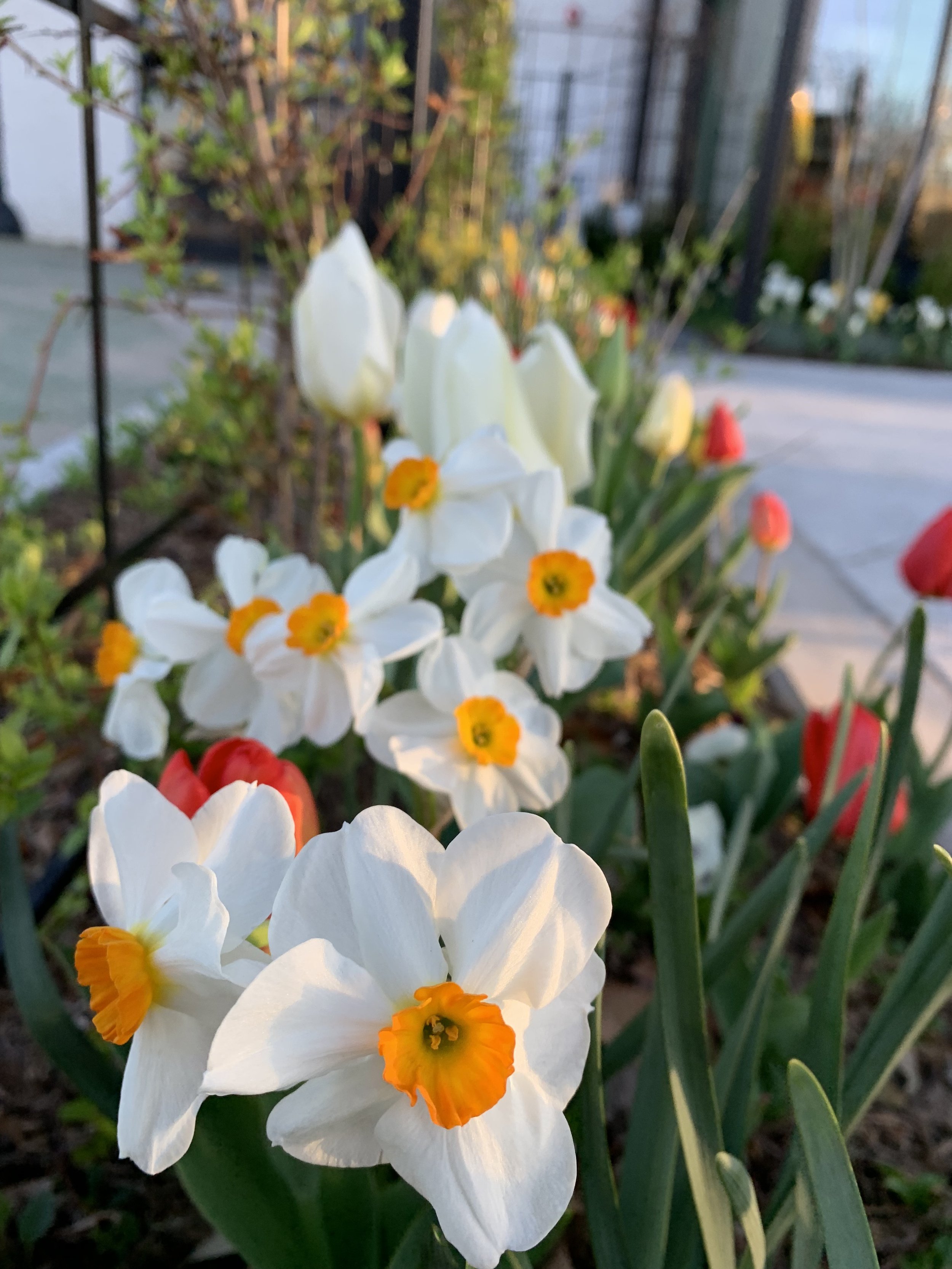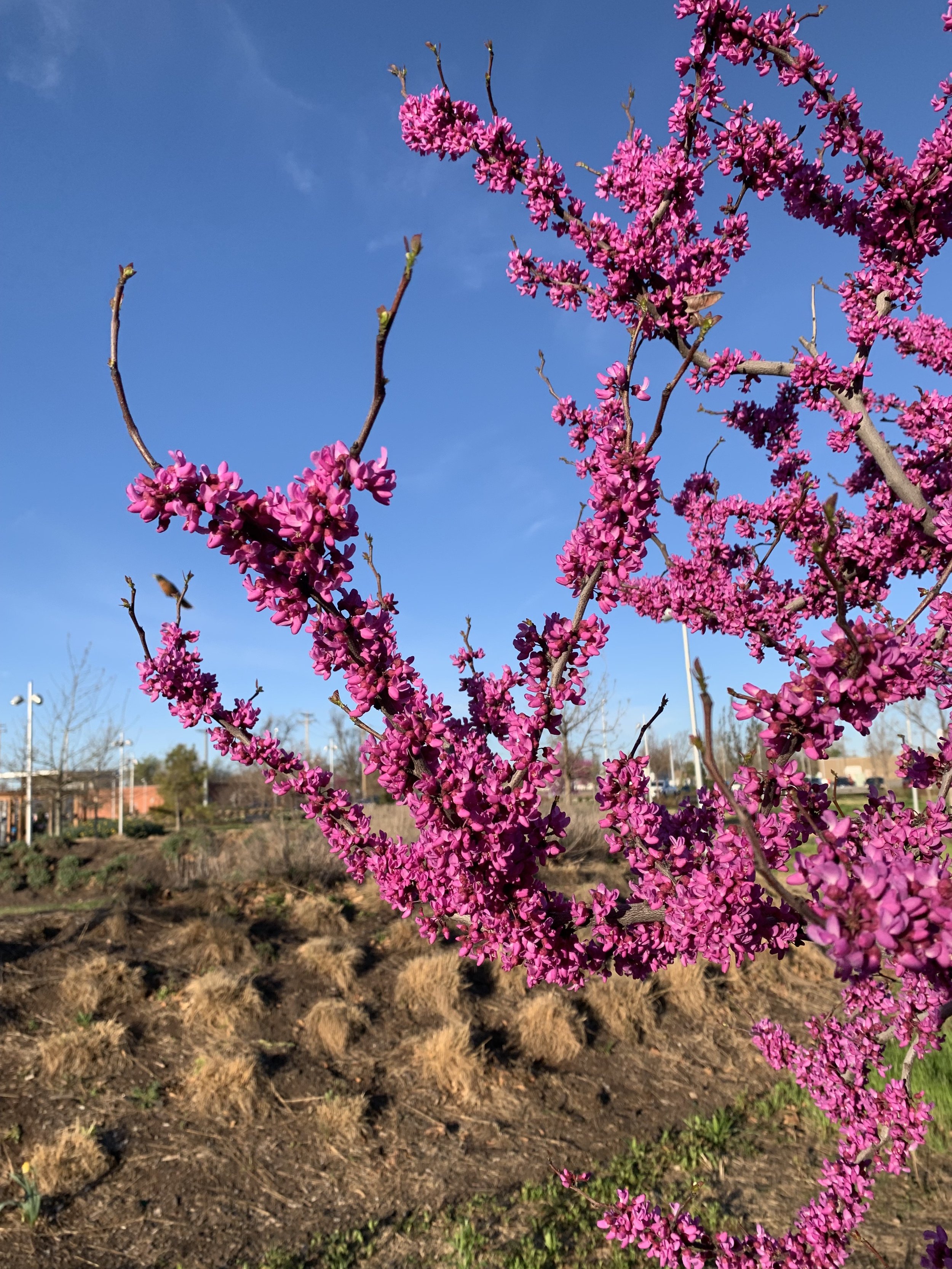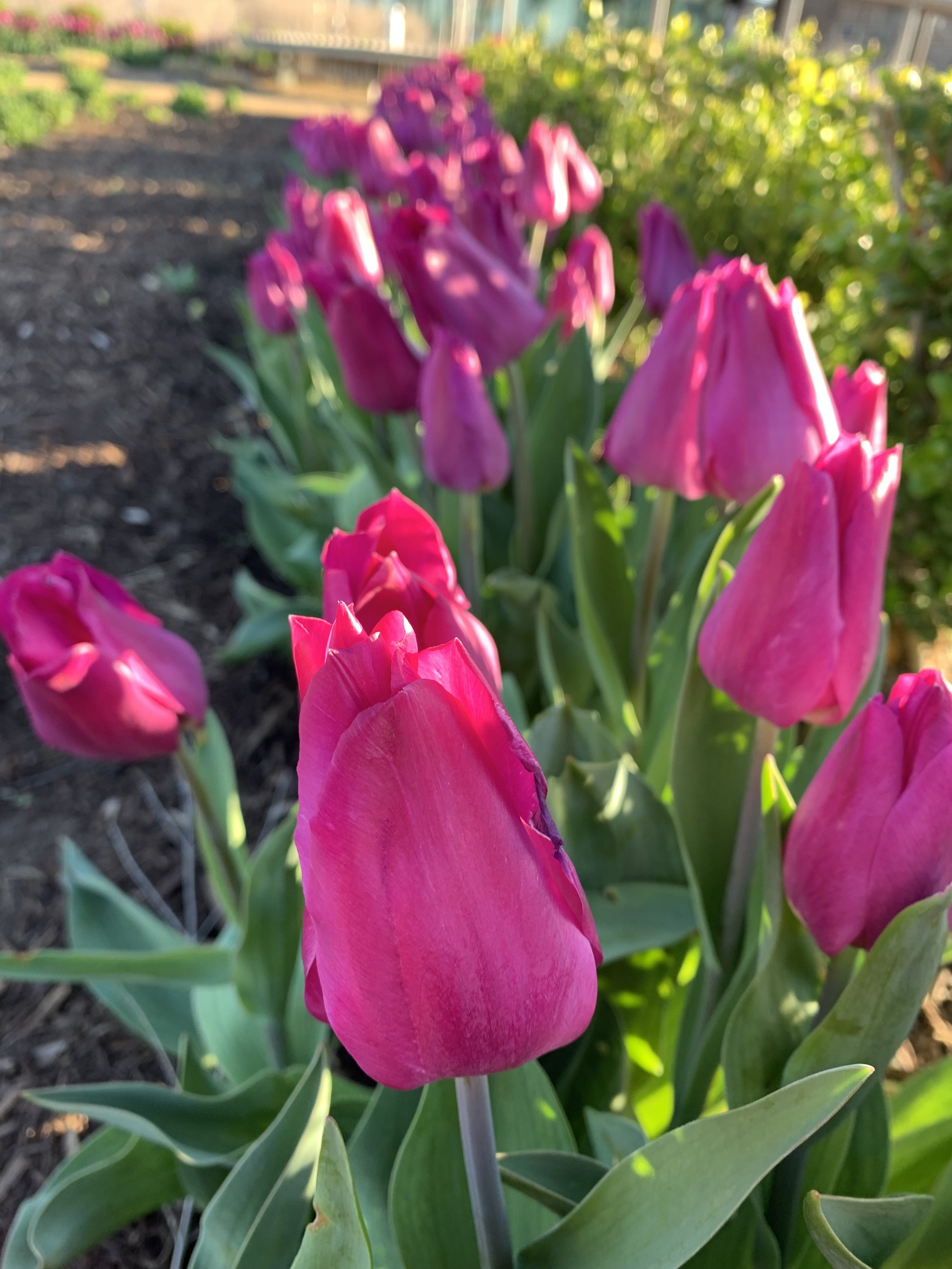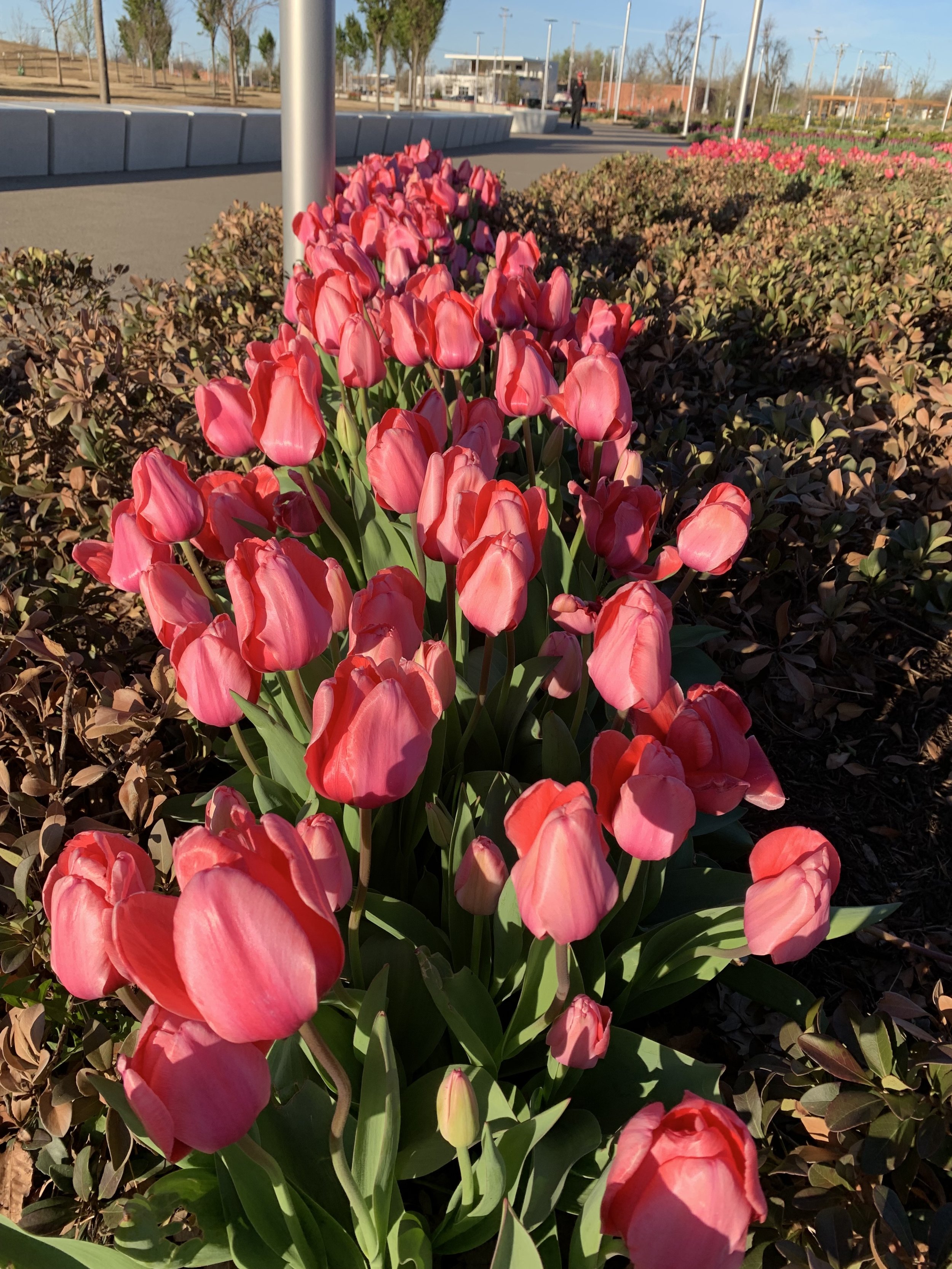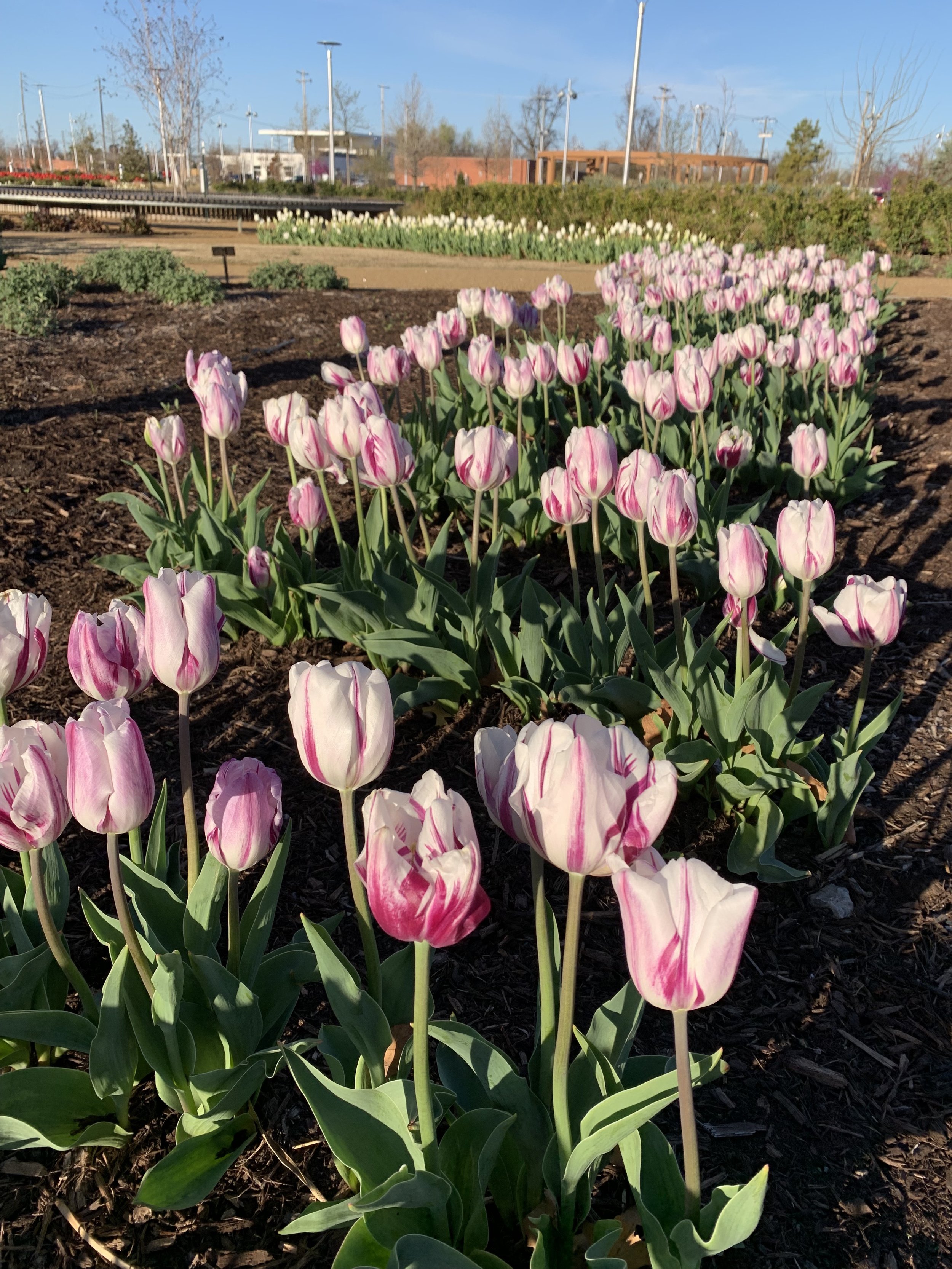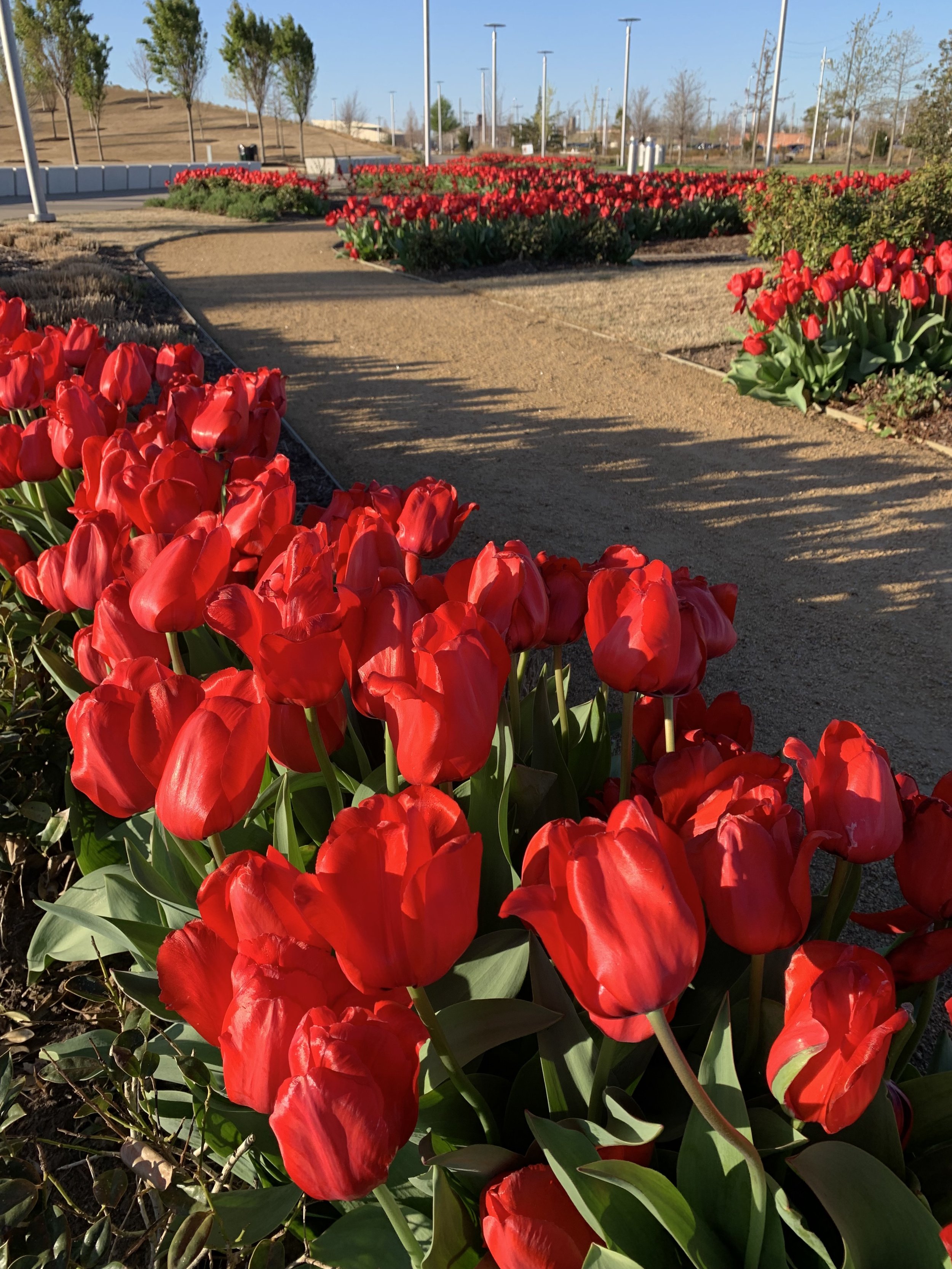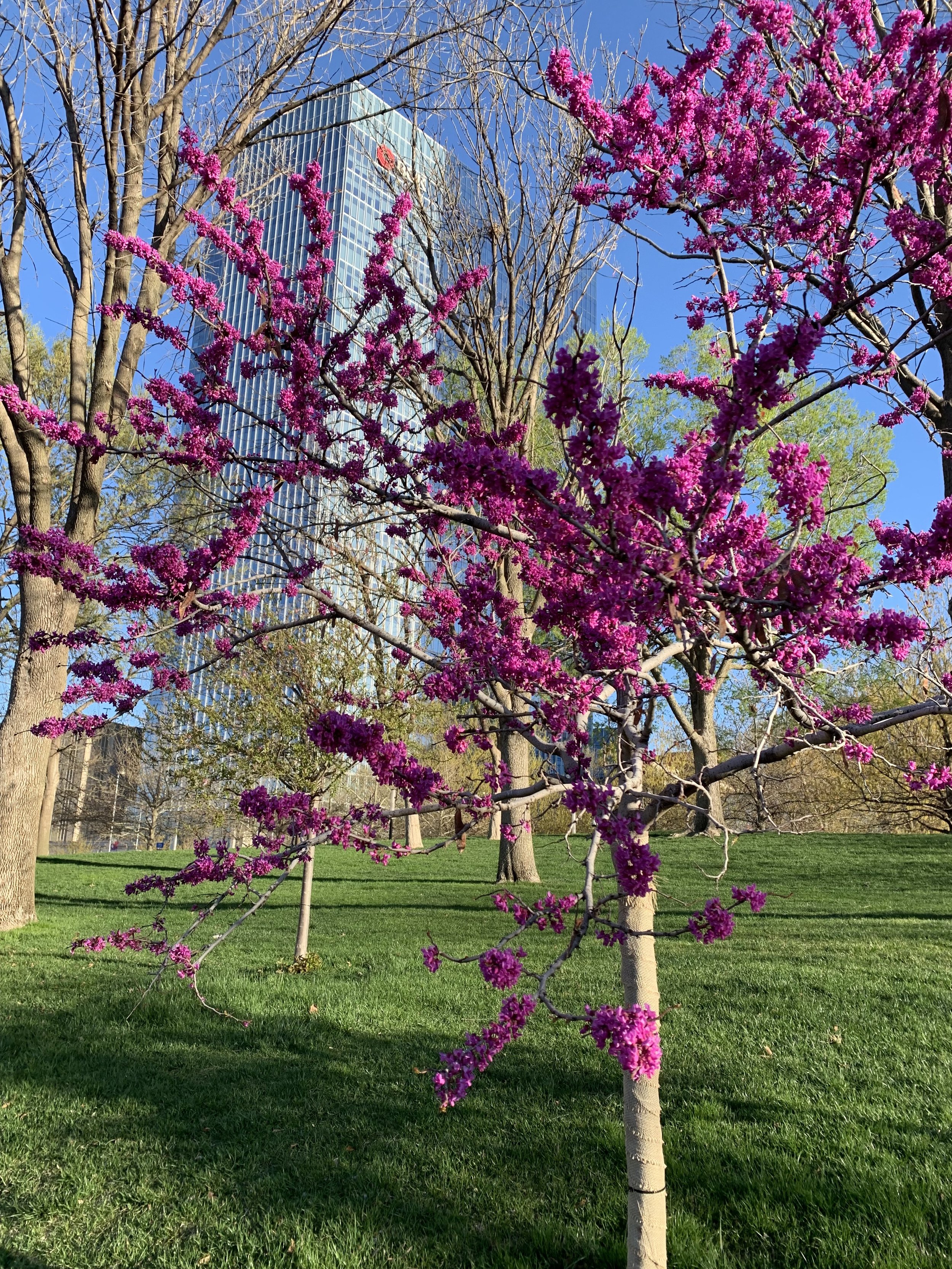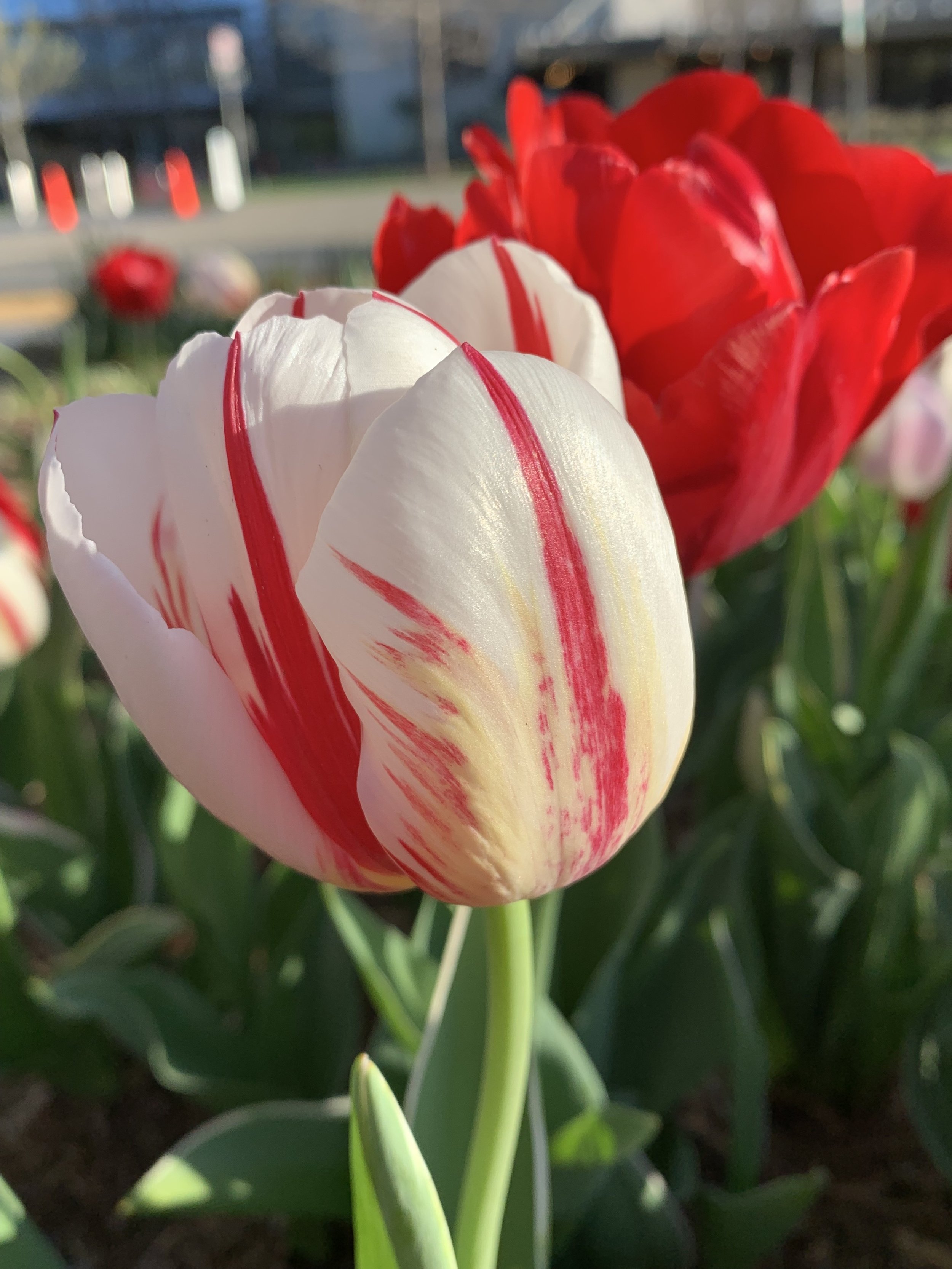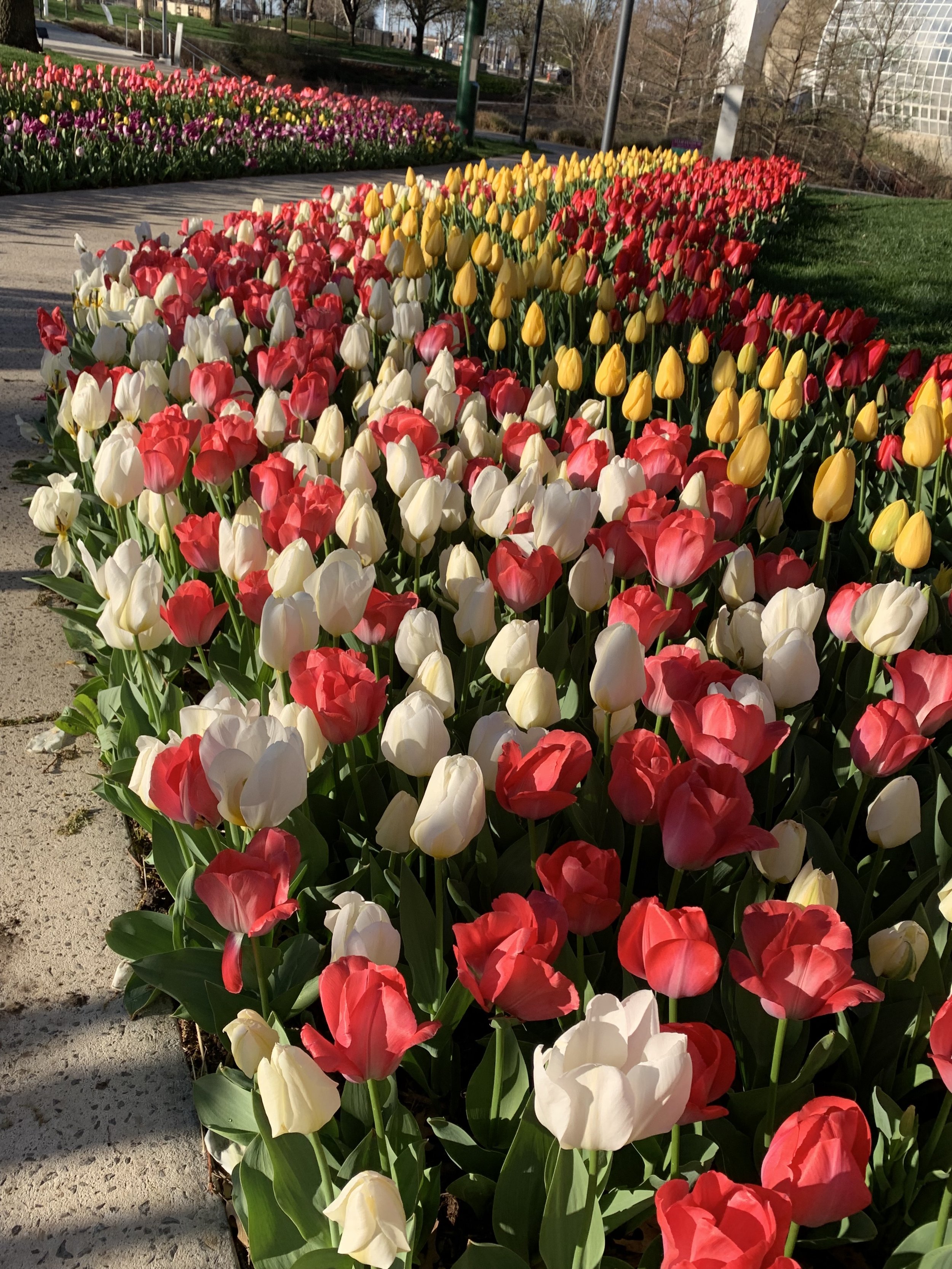April Lawn & Landscape Tips
Awe…April…there are not enough words to describe April.
April…the month the color of Fescue lawns become more vibrant every day.
April…the month Bermuda lawns shake off the winter brown and every day add more green.
April…the month you discover another perennial, shrub or tree is adding splashes of color every day.
April…the month you just want to be outside every day.
April…is the month something is coming to life every day.
April is a big month for your lawn and landscape. It is the transition month between cool weather and warm weather and so many important tasks need our attention.
The first purple blooms will grace wisteria vines this month.
What a spring for tulips! The colors have been spectacular and without extreme cold or hot weather they just keep going and going and going.
April is the month Fescue lawns make a big statement. If you have fescue it is time to start mowing every 5-7 days.
There are many varieties of Viburnum that grace the landscapes in April.
Henbit is a winter annual broadleaf weed know for purple flowers. If you want a clean lawn in April, don’t skip the two fall pre-emergent weed control applications.
April is the month Flowering Crab Apples shine!
Salvia start adding blue to purple spikes this month. May Night Salvia is a great companion perennial to dianthus.
Turf Fertilizer
Both Fescue and Bermuda lawns will benefit from a fertilizer application this month. If you subscribe to the Hall | Stewart 7-Step Lawn Care Program, your lawn will receive fertilizer. If you subscribe to our 4-Step Weed Control Only Program, apply fertilizer to your lawn this month. Look for a fertilizer with 25-30% nitrogen and a small amount of phosphorus and potassium.
It is hard to beat the deep green color of fescue in April.
Dianthus is a perennial that starts putting on a show in April.
Turf Weed Control
The second spring pre-emergent application started in March and continues through April. A second spring pre-emergent is important because pre-emergent herbicides gradually break down overtime. A second pre-emergent extends weed prevention through the summer months. April is a good time to get control of broadleaf weeds in Fescue, but while Bermuda is coming out of dormancy you must be careful with herbicide applications not to cause damage. Good turf development now is the key to a healthy lawn all summer and you don’t want to cause any harm while warm season turf is coming out of dormancy.
Our promise to you is to take all the steps we can to remedy weed issues in a way that is safe for your lawn and the environment.
Our request is that you always let us know how your lawn is doing 10-14 days after an application.
If the lawn needs to be retreated, results will be better if it occurs within 2-3 weeks of the initial application.
Poa Annua, annual bluegrass, is a winter annual that weed that is easier to prevent with fall pre-emergent herbicides than it is in the spring.
With soil temperatures in the mid 50’s, bermuda lawns are starting to green up. As soil temperatures reach into the 60’s, they will begin to actively grow.
In the right location, a place with dappled or morning sun with acidic, well drained soil, Dogwoods add a splash of brightness to the landscape this month.
One of the first perennials to bloom each spring is creeping phlox.
Tree & Shrub Care
April continues to be a good time to fertilize trees and shrubs with slow-release nitrogen, high quality phosphorus and potassium as well as micronutrients to provide consistent, extended feeding. This formulation is ideal for improving tree and ornamental development and vigor without unwanted shoot growth. Spring is also a good time to apply systemic insecticide to control sucking and chewing insects. As temperatures warm start inspecting plant material for insect activity. Early detection is an important part of insect control.
Hall | Stewart Lawn + Landscape follows an integrated pest management approach, which starts with inspecting trees and shrubs and treating as needed.
Important: Unhealthy trees and shrubs, those that are under stress, are more susceptible to insect and disease problems. Put your plants on your calendar for a frequent inspection. Be ready to treat problems as they arise.
Need help protecting your landscape investment?
Give us a call, (405)367-3873 or respond to this email.
Our Tree & Shrub Care Specialist would love to make a visit to evaluate the health of your landscape plants.
Shrub Pruning
April is the last chance to do early season pruning on crape myrtles, hollies and ornamental grasses. On crape myrtles, remove any crossing or rubbing branches, cut off last year’s left-over seed heads, and any branches off that are smaller than a pencil. Overgrown hollies can still be reduced in size if you do it soon. The goal is to do any major pruning before the first heavy growth flush of the year. On ornamental grasses, cut them down to about 1’ before new growth begins to shoot up from the grass clump. Now that hydrangeas have started to bud, you can prune dead branch tips back to just above the highest bud.
For more information on Hydrangea varieties and care, visit our post from last week: https://www.hallstewart.com/hsblog/hydrangeas
Oh, the colors of new leaves on Japanese Maples!
Creeping Phlox, one of the first perennials to bloom, are putting on a show.
Deciduous (plants that drop their leaves in the winter) shrubs, such as abelia are coming to life.
Flowering Quince is an old fashion shrub that provides a show of red March to April.
Love peonies? Look for their blooms to burst open before the end of April.
Looking for a shrub that will add a fun splash of orangish red to your landscape in the spring? The leaves of Double Play Candy Corn Spirea emerge with a bright candy apple red and then mature to a bold yellow.
Lawn Maintenance
If you have a Fescue lawn, April is the month that you will need to start mowing regularly. Remember the rule of 1/3 – never cut more than 1/3 of the turf off in a single mowing. Anytime you cut more than 1/3 of the leaf blade off you are keeping your lawn from looking its absolute best. Start mowing the Fescue taller in April. It needs to have as much leaf space as possible going into the summer months.
If you have a warm season lawn (Bermuda or Zoysia) and have not already cut the lawn short for the spring, do so as soon as possible. Once the lawn starts growing it will need to be mowed every 10-14 days during a typical April. Try to keep your Bermuda lawns cut short early in the season by mowing often enough that you never remove more than 1/3 of the leaf when mowing.
Seasonal Color
We all have the tendency to get a little antsy and want to plant annuals a little too early. Who can blame you? With all the colorful plants already in the garden centers, it is hard to resist. Start with annuals that tolerate a few cool nights, such as begonia and impatient, and wait until May to plant heat loving annuals, such as periwinkle, lantana, penta.
Note: Go ahead and open up your calendar now and set yourself a reminder for next fall. Yes, next fall. We don’t want you miss out on planting spring flowering bulbs such as tulips, daffodils, hyacinths etc. You won’t regret it!
Oakleaf Hydrangeas are leafing out.
April = Tulips! Take a stroll through the Myriad Gardens this week.
Irrigation
As the weather warms in April, your lawn and landscape will start needing more routine watering. If we go more than a week without a ½” rainfall, you need to start watering. Remember to follow the odd/even watering restrictions. If you have a rain sensor, it will interrupt the cycle when we receive rain. If you don’t, please remember to turn your system off when we get a good rainfall.
If you don’t have a rain sensor, consider having one installed.
A sensor will pay for itself in water savings very quickly.
Creeping Phlox adds interest to landscape edges and stone borders.
Bridal Wreath Spirea brighten the landscapes this month.
Ornamental Peach trees are benefiting from the slow warm up this spring.
Flowering Crabapple trees are demanding attention in the landscape.
Maynight Salvia is one of the perennials that will add color this month.
One of my April favorites, Saucer Magnolia.
Start planning now to plant bulbs this fall for spring color next year.
April is the month azaleas dazzle us with an explosion of colors.
Now, go get outside!
The world is bursting with new life!
If you have any questions about your lawn or landscape, please send us an email or call (405)367-3873.
Lorne Hall
Hall | Stewart Lawn + Landscape
(405)367-3873
Picture of the Week:
Dogwood - Known for the graceful flowers that arrive around Easter every spring. They are a small tree that needs to be out of the full sun making them a great understory addition to your landscape.








